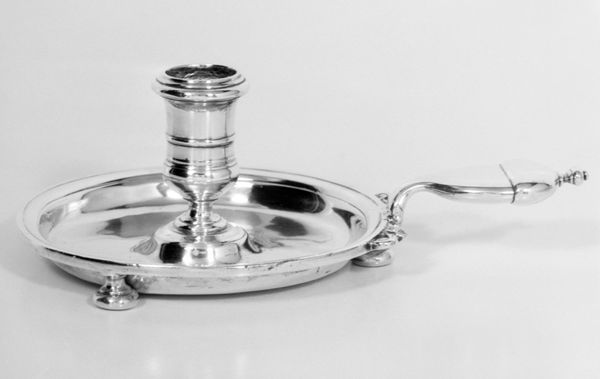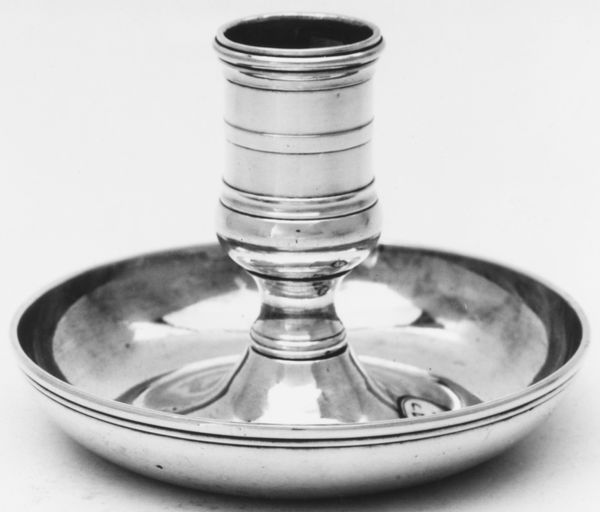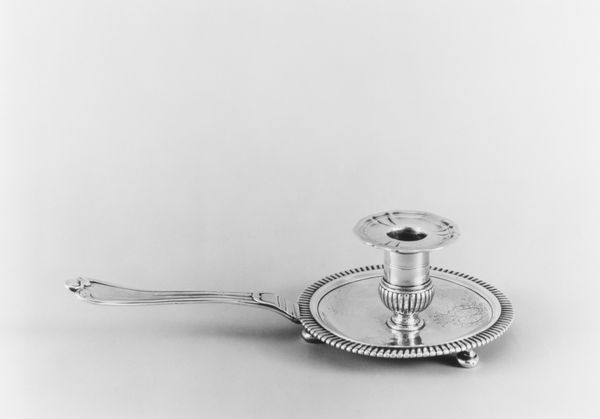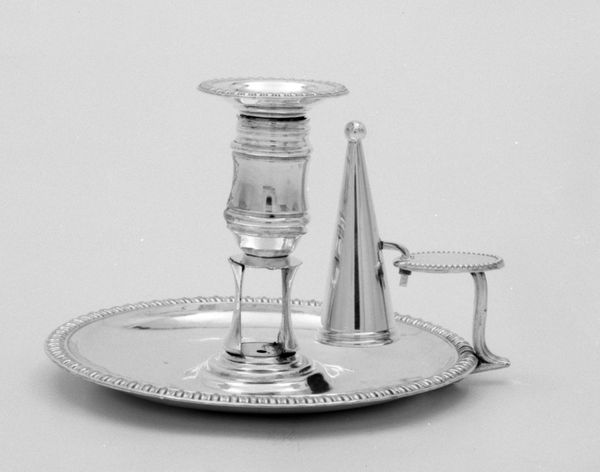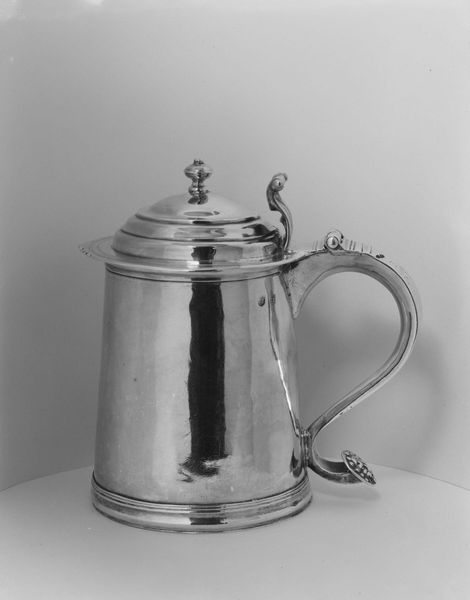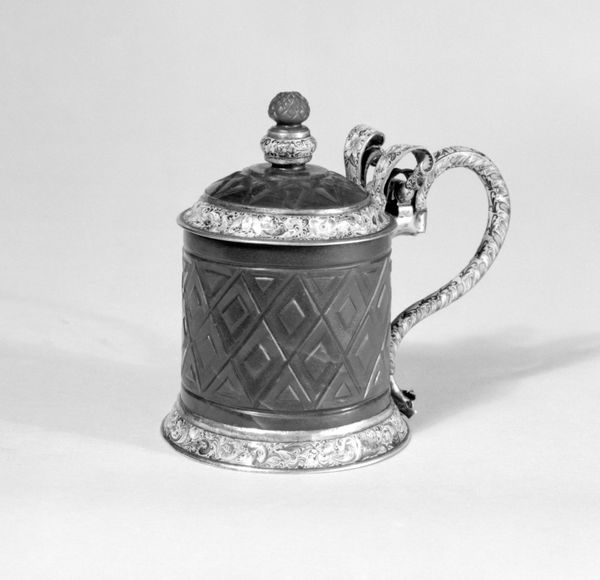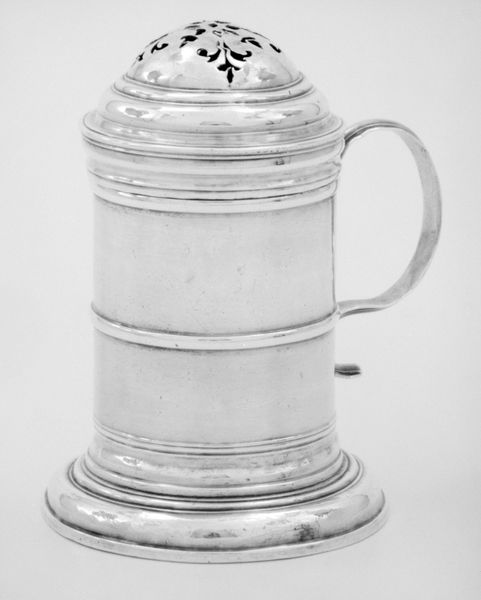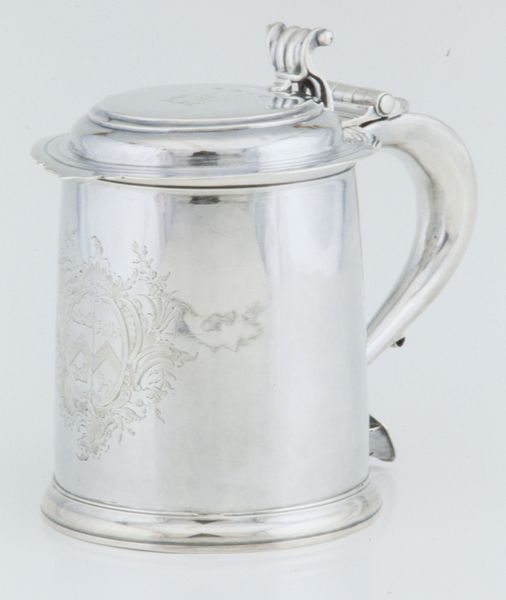
Pair of bases and candleholders (part of a set) 1848 - 1849
0:00
0:00
silver, metal, sculpture
#
silver
#
metal
#
sculpture
#
decorative-art
Dimensions: a) 1/4 x 2 1/2 x 3 7/16 in. (0.6 x 6.4 x 8.7 cm); b) 2 x 1 9/16 x 2 1/4 in. (5.1 x 4 x 5.7 cm)
Copyright: Public Domain
Editor: So, here we have a silver candleholder made between 1848 and 1849 by Johann Bernhard Hertz. It's part of a pair. I'm really struck by the floral engraving and the somewhat unusual triangular base. What's your take on this piece? Curator: It’s fascinating how seemingly mundane objects like this candleholder can tell us so much about the cultural values of the time. Mid-19th century decorative arts, especially those crafted in silver, spoke volumes about status and aspiration. Where would something like this have sat within the house? What kind of person would buy it? Editor: I suppose it would have been displayed prominently, a symbol of wealth perhaps? Curator: Precisely. And notice how the form mimics trends in furniture and architecture. Those curving lines, for instance, connect it to wider artistic movements that prized ornamentation and elegance, but also access. Candlelight, and access to materials to hold a candle, held political significance! This object, through display, could make a very political statement about taste and refinement. Editor: The level of detail in the engraving is impressive, almost excessive. Was that a common feature? Curator: Yes, mass production made ornate items slightly more available, thus display became a major signal of socio-economic class. Also, consider the context: post-revolution in many parts of Europe. These types of items signaled stability, which held meaning at the time. Editor: I hadn't thought about the political aspects of owning something like this. I tend to just look at it aesthetically. Curator: The aesthetics are, of course, important, but considering its place in the home and society gives us a much deeper appreciation. I see that the design speaks to anxieties of the time, so it’s a political statement that one might display it prominently, it signaled safety and access. Editor: So, much more than just a pretty candleholder. I'm looking at it in a totally different light now!
Comments
No comments
Be the first to comment and join the conversation on the ultimate creative platform.
